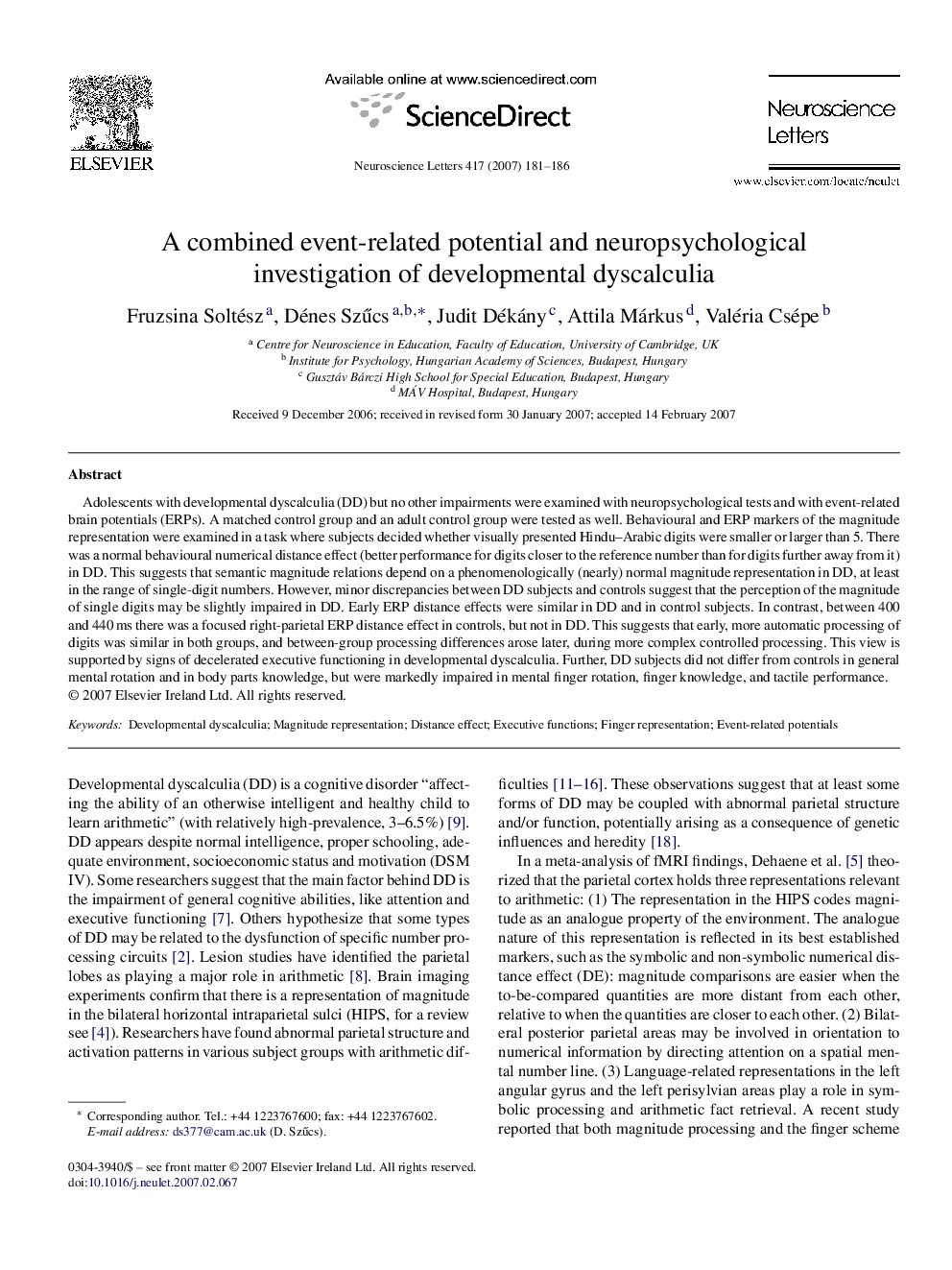| Article ID | Journal | Published Year | Pages | File Type |
|---|---|---|---|---|
| 4349575 | Neuroscience Letters | 2007 | 6 Pages |
Adolescents with developmental dyscalculia (DD) but no other impairments were examined with neuropsychological tests and with event-related brain potentials (ERPs). A matched control group and an adult control group were tested as well. Behavioural and ERP markers of the magnitude representation were examined in a task where subjects decided whether visually presented Hindu–Arabic digits were smaller or larger than 5. There was a normal behavioural numerical distance effect (better performance for digits closer to the reference number than for digits further away from it) in DD. This suggests that semantic magnitude relations depend on a phenomenologically (nearly) normal magnitude representation in DD, at least in the range of single-digit numbers. However, minor discrepancies between DD subjects and controls suggest that the perception of the magnitude of single digits may be slightly impaired in DD. Early ERP distance effects were similar in DD and in control subjects. In contrast, between 400 and 440 ms there was a focused right-parietal ERP distance effect in controls, but not in DD. This suggests that early, more automatic processing of digits was similar in both groups, and between-group processing differences arose later, during more complex controlled processing. This view is supported by signs of decelerated executive functioning in developmental dyscalculia. Further, DD subjects did not differ from controls in general mental rotation and in body parts knowledge, but were markedly impaired in mental finger rotation, finger knowledge, and tactile performance.
